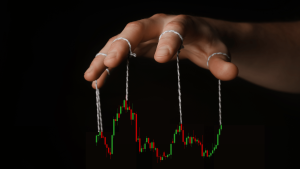As we approach the week of September 23-27, 2024, the crypto market is facing significant developments that traders should monitor closely. From ongoing effects of the post-halving environment in Bitcoin to upgrades in major blockchain ecosystems and macroeconomic influences, the week ahead holds a mixture of opportunity and risk for crypto traders. In this blog, we’ll break down the most important events, their potential impact on the market, and how traders can position themselves accordingly.
1. Bitcoin Price Action: Post-Halving Market Dynamics
Following Bitcoin’s April 2024 halving, the market has been dealing with reduced block rewards and changing miner behavior. While the immediate effects of the halving are behind us, its long-term impact on price and network dynamics is still unfolding. Many analysts expect the reduced supply to create upward pressure on Bitcoin’s price over the coming months, although macroeconomic factors, such as inflation data and global economic policy, continue to play a key role in short-term volatility.
What to Watch:
- Bitcoin’s price movements in response to upcoming U.S. macroeconomic data, including inflation reports and interest rate changes.
- Miner activity and network difficulty adjustments, which could influence short-term supply and demand dynamics.
2. Ethereum and Layer-2 Solutions Gaining Traction
Ethereum continues to dominate the decentralized finance (DeFi) space, but Layer-2 solutions are becoming increasingly critical to its scalability. Platforms such as Optimism and Arbitrum are seeing growing user activity, helping alleviate congestion on Ethereum’s main network. Additionally, Polygon’s CDK (Chain Development Kit), which allows developers to easily build on Layer-2, could see increasing attention and integration.
What to Watch:
- Adoption and usage growth in Layer-2 platforms, and how they impact Ethereum’s transaction fees.
- Projects migrating to Layer-2 solutions and how liquidity is shifting across DeFi platforms.
3. Altcoin Market: EOS Hard Fork and Numerai Launch
EOS, a major player in the blockchain ecosystem, is undergoing a hard fork on September 25, 2024, aimed at improving governance and network performance. This event could lead to short-term volatility, especially as the market responds to potential changes in user adoption and functionality. On the same day, Numerai is set to launch its highly anticipated V5 Atlas, which may attract institutional investors interested in AI-driven data analysis.
What to Watch:
- Market reaction to the EOS hard fork, particularly in terms of trading volume and network stability.
- Potential price movements in Numeraire (NMR), as interest in the platform’s AI capabilities grows.
4. Regulatory Updates: MiCA Regulations Impact
The Markets in Crypto Assets (MiCA) regulation, which recently went into effect in the European Union, is expected to shape the market this week as traders and investors adjust to new compliance requirements. MiCA provides a regulatory framework for crypto assets, focusing on stablecoins and market integrity, and could bring more institutional investors into the space as regulatory clarity increases.
What to Watch:
- Changes in market sentiment as European traders and exchanges adapt to MiCA regulations.
- The potential for MiCA to influence the adoption of regulated stablecoins, such as USDC and EUROC, and how these assets perform under the new regulatory regime.
5. Macroeconomic Factors and Geopolitical Risks
Outside of crypto-specific events, macroeconomic factors will continue to influence the market. With the U.S. Federal Reserve likely to release key inflation and interest rate data this week, traders should keep an eye on how global economic policies are impacting the appetite for risk-on assets like Bitcoin and Ethereum. Additionally, geopolitical tensions, particularly between Russia and Ukraine, could create additional market volatility, especially in energy-dependent crypto markets.
What to Watch:
- U.S. inflation data and its impact on risk sentiment across global markets, particularly in the crypto space.
- Potential volatility driven by geopolitical events, and how traders can hedge against unexpected market shocks.
6. Best Practices for Navigating the Week’s Volatility
With several critical developments expected in the coming week, it’s important to have a clear strategy in place to manage risk and seize opportunities. Here are some best practices for trading during a volatile week:
A. Stay Informed and Use Economic Calendars
Keep track of major protocol upgrades, macroeconomic data releases, and regulatory developments using an economic calendar. Being aware of when these events are happening allows you to plan your trades and avoid unexpected market moves.
B. Manage Risk Carefully
Volatile markets can lead to sharp price swings, so it’s crucial to use proper risk management techniques. Consider using stop-loss orders to limit potential losses, and avoid over-leveraging during uncertain times.
C. Focus on Technical Analysis
Use technical analysis to identify key support and resistance levels before entering or exiting trades. This can help you time the market more effectively and avoid getting caught in rapid market movements.
D. Diversify Your Portfolio
In a volatile market, diversifying your holdings across various assets—such as Bitcoin, Ethereum, stablecoins, and other altcoins—can help mitigate risk and provide more opportunities for profit.
Get Real-Time Insights with EPIQ Trading Floor
If you’re looking to stay ahead of market developments and take advantage of upcoming opportunities, EPIQ Trading Floor is here to help. Our platform offers real-time trading signals, expert market analysis, and a community of traders who can help you navigate the fast-moving world of cryptocurrency.
Start your 3-day free trial today! Join EPIQ Trading Floor and gain access to exclusive strategies, tools, and real-time insights that will give you an edge in the crypto markets.
Disclaimer
The information provided in this blog is for educational purposes only and does not constitute financial advice. Always conduct your own research before making any investment decisions.










Responses